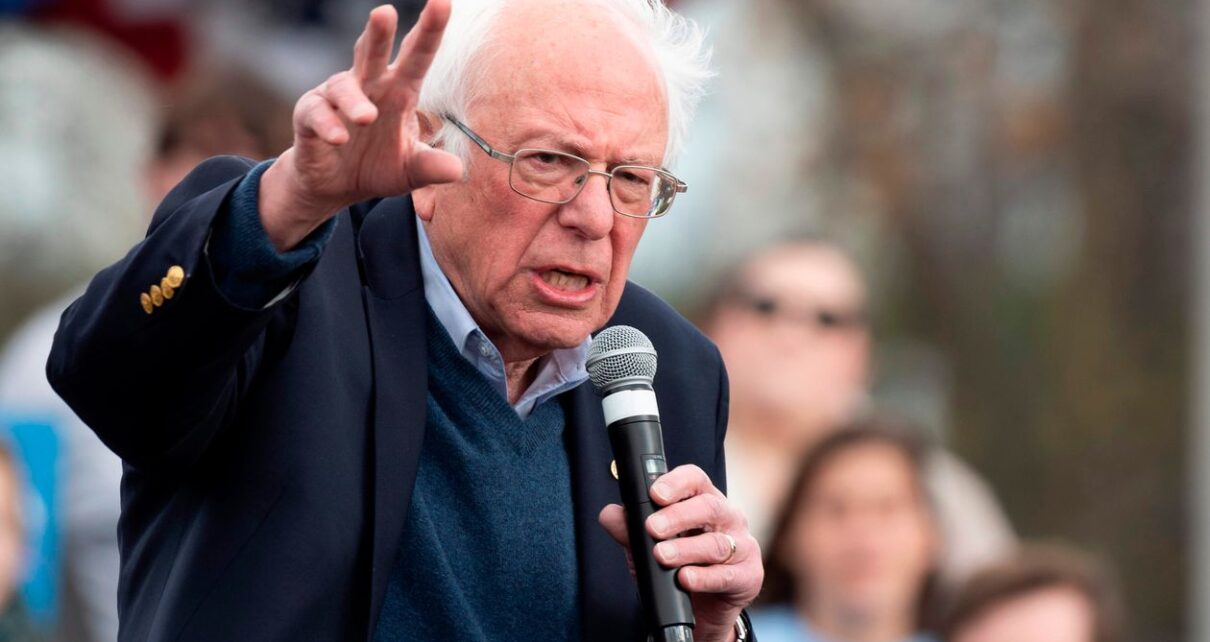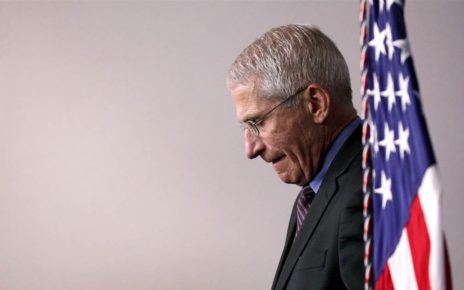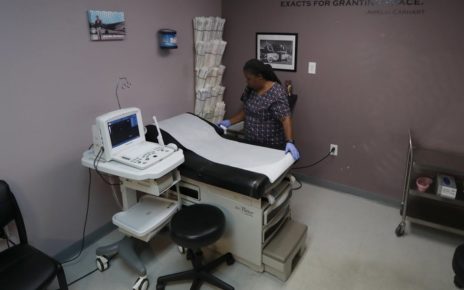Bernie Sanders speaks at a rally in Columbia, S.C., Feb. 28. Photo: jim watson/Agence France-Presse/Getty Images
Bernie Sanders released an updated plan last week to pay for Medicare for All. The plan is light on details, but leaves the senator at least $12.5 trillion short of covering the cost of his health-care proposal over 10 years. It calls for some tax increases on working families, but the real burden may be much higher than advertised: Mr. Sanders may have to raise taxes on American workers by 16 percentage points or more to avoid multitrillion-dollar deficits. Fortunately, Elizabeth Warren’s financing plan for Medicare for All offers a better alternative.
Mr. Sanders’s blueprint identifies $17.5 trillion in new federal revenue over the next 10 years, sourced to new or higher taxes on workers and corporations, among other changes to the code. Mr. Sanders bases his calculations on a study by Yale researchers published recently in the Lancet, which found that his plan would reduce national health spending from $52 trillion over a decade to $47 trillion. Mr. Sanders claims he will redirect the current projected $30 trillion in federal, state and local health-care spending over the next decade to Medicare for All. Thus, he says he only needs $17 trillion to fill the gap.
There are three problems with his math. First, the Yale study didn’t account for the cost of Mr. Sanders’s long-term care program—estimated at around $2.5 trillion. Second, the study assumed reimbursement cuts to hospitals that Mr. Sanders hasn’t explicitly endorsed. Third, Mr. Sanders’s $30 trillion in projected federal spending includes funding for the National Institutes of Health, the Centers for Disease Control and Prevention and more. This money can’t be spent on Medicare for All unless it is zeroed out from these vital public-health agencies.
Most analyses have found that the Sanders Medicare for All proposal would require around $30 trillion in new federal spending over a decade. That leaves Mr. Sanders $12.5 trillion short of what he needs to cover the cost of his plan.
How could Mr. Sanders fill the gap? His plan includes two proposals that affect middle-class families. One is a 4% “income-based premium” on workers, which excludes the first $29,000 in income for a family of four. This “premium” would be an additional tax on income above the exclusion floor, and presumably even less income would be excluded for single workers or those without children. The senator says this tax will generate $4 trillion over 10 years. To make up the $12.5 trillion shortfall, that tax would need to be roughly four times as large—the equivalent of a tax increase of 16% of income.
Mr. Sanders’s second proposal is a 7.5% payroll tax paid by employers that exempts the first $1 million of a company’s payroll. Mr. Sanders estimates this would generate $5.2 trillion over 10 years. To generate the missing $12.5 trillion, that payroll tax rate would need to reach roughly 26.5%. And while the employer receives the bill, higher payroll taxes are mostly passed on to workers in lower wages, reduced hours or both.
Mr. Sanders could raise taxes on the wealthy and big corporations. But he already plans to do that: His financing for Medicare for All and other plans includes a wealth tax, a substantial corporate tax increase, a financial-transactions tax, an increase in the top personal tax rate, and a capital-gains tax increase. There isn’t room to squeeze trillions in additional revenue out of these sources.
Mr. Sanders is adamant that total costs for middle-class families will go down, because new taxes will be less than what families save on health-care costs. This is plausible in the aggregate at certain income levels. But it is implausible that every middle-class family will come out ahead—especially if the plan is fully paid for in taxes.
The plan Ms. Warren released in October addresses these vulnerabilities. Unlike Mr. Sanders’s plan, it commits to specific reimbursement rates for health-care providers—roughly 110% of current Medicare rates. Her plan brings the overall cost of Medicare for All down to $20.5 trillion over 10 years, according to an analysis I did with Donald Berwick, who ran the Centers for Medicare and Medicaid Services under President Obama. Ms. Warren’s plan doesn’t raise taxes on the middle class. Every business that pays for employee health insurance today will pay less for each employee during the transition.
As Democrats choose a nominee, they should consider which candidate’s Medicare for All financing plan is best for working families and provides the most appealing general election message.
Mr. Johnson is a professor of entrepreneurship at the MIT Sloan School of Management and an informal adviser to Elizabeth Warren’s campaign.
Copyright ©2019 Dow Jones & Company, Inc. All Rights Reserved. 87990cbe856818d5eddac44c7b1cdeb8
Source: Warren, Unlike Sanders, Makes the Medicare Math Add Up – WSJ





